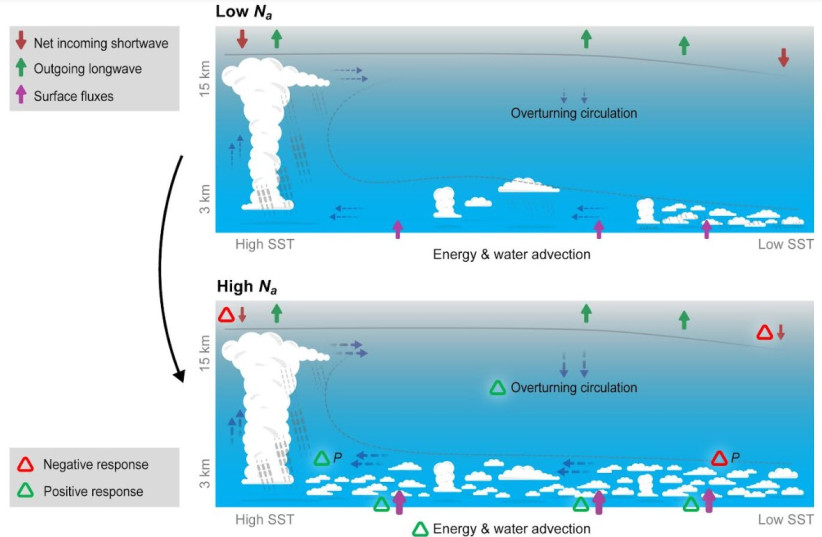A new study by researchers from Hebrew and Princeton universities has advanced our comprehension of the intricate relationship between human activities, clouds, and their subsequent impact on climate.
The research sheds light on this complex interplay, providing insights into the influence of pollution on weather patterns and broader climate dynamics.
The Hebrew University explained that the interaction between minuscule pollution particles (aerosols) caused by human activities and the dynamics of clouds play a crucial role in understanding the complexities of our climate system. However, reconciling the substantial differences in scale between cloud formations, which range from about 1 to 10 kilometers, and the more extensive atmospheric circulation and climate patterns that extend over 1,000 kilometers has presented a considerable challenge.
Dr. Guy Dagan of Hebrew University’s Institute of Earth Sciences, working with researchers from Princeton University, recently completed a study that helps scientists comprehend the intricate interactions between these particles, clouds, and the climate.
“The innovative approach employed by Dr. Dagan’s team involved sophisticated computer simulations capable of examining the minute details of the sky while capturing the broader essence of the entire climate system,” the university explained. “Through a meticulously crafted series of simulations, the team dissected mechanisms involving changes in the large-scale circulation due to air pollution.

“Their comparative analysis revealed a compelling revelation: the presence of aerosols triggers changes in large-scale circulation, which substantially enhances the effective radiative effect of human activity on the climate system,” the university said.
Dagan explained the importance of his work as follows: “Think about taking a picture. If you are close to an object, you’ll get all of its details, but you may not see the entire picture. You can capture the whole thing if you move further away from it, but the resolution will be lower, and you won’t see the details.
“With our method, you can have enough resolution to capture the details and get the entire object,” he told The Jerusalem Post.
Increased presence of aerosols inhibits rainfall
This method enabled the team to study the interaction between local clouds and the large-scale climate system. They saw that when there was an increase in aerosols by human activity, it affected the clouds and large-scale circulation.
Another key finding was that the increased presence of aerosols inhibits rainfall in certain regions. Consequently, moisture is redirected to areas conducive to the formation of large clouds. These large cloud formations release additional heat into the atmosphere, intensifying wind patterns.
“Our study helps us understand better how aerosols and clouds affect the climate,” Dagan added. “The changes caused by aerosols come from complex shifts in big weather patterns, showing us an important part of how these interactions affect the climate.”
